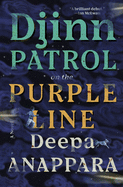
| Publisher: | Random House | |
| Genre: | Mystery & Detective, Amateur Sleuth, International Crime & Mystery, Literary, Coming of Age, Fiction | |
| ISBN: | 9780593129197 | |
| Pub Date: | February 2020 | |
| Price: | $27 |
| Starred | Fiction |
by Deepa Anappara
The great suspense in journalist Deepa Anappara's confident charmer of a debut novel comes from the author's slow revelation of just what kind of story she's telling. As schoolboy narrator Jai and two pals head deep into Mumbai, in an effort to track down children who have vanished from their impoverished neighborhood on the city's far outskirts, readers will likely hope that Djinn Patrol on the Purple Line turns out to be the kind of novel where scrappy kids can crack a case.
Jai, raised on TV police procedurals, certainly believes so, especially if he can find a scent for his street mutt Samosa to track. But Anappara draws startling contrast between her protagonists' game of "detectiving" and the reality of urban India, a country where a reported 180 children go missing each day. Kids get abducted and sold; parents fear to report the missing to the police, as the officers demand bribes and threaten to bulldoze their troublesome slum; Hindus blame Muslims and organize unruly patrols. Anappara supplements Jai's tour through shanties and brothels with resonant third-person chapters steeping readers in the lives of each of the missing kids, as well as shivery recountings of street kids' ghost stories. The result is a novel that offers the urgent tug of suspense, the playful kick of a child's adventures in forbidden places, the fascinations of local folklore, and a journalist's committed dramatization of socioeconomic reality. Anappara's absorbing story seizes the heart. --Alan Scherstuhl, freelance writer and editor
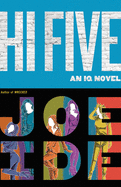
| Publisher: | Mulholland Books | |
| Genre: | Psychological, Private Investigators, Mystery & Detective, Fiction, African American | |
| ISBN: | 9780316509534 | |
| Pub Date: | January 2020 | |
| Price: | $27 |
| Fiction |
by Joe Ide
In Hi Five, the fourth installment in the IQ series (Wrecked; Righteous), Joe Ide continues to deliver exhilarating action with humor and richly drawn characters. Isaiah Quintabe (IQ), East Los Angeles's unofficial private investigator, has settled down after surviving his toughest case against a rogue paramilitary force. But two people are missing from his life: his one-time partner Dodson is trying to go legit again, and despite the presence of violinist girlfriend Stella, IQ has never forgotten Grace, who skipped town two years ago. When IQ declines to investigate the death of Tyler Barnes in a swanky boutique, he soon learns that not everyone accepts no for an answer
Tyler was the favorite employee of Angus Byrne, an arms dealer and white supremacist. The boutique where Tyler was killed is owned by Angus's daughter Christiana, who was present during the murder and the likeliest suspect. It's up to IQ to prove Christiana's innocence and find the real killer; Angus makes it clear Stella's career as a violinist is over if IQ doesn't cooperate. Angus leaves out one small detail--Christiana has multiple personalities, and any one of her five "alters" may have witnessed the murder. Or did one of them commit the crime?
IQ, less awkward but still serious, is tested when Grace returns to East L.A.; Dodson struggles to stick to his promise to his wife, Cherise, to go straight for their son, Micah; and IQ and Grace's faithful friend, junkyard owner TK, self-consciously (and hilariously) pursues Cherise's upright (and uptight) mother, Gloria. Ide's nuanced view of East L.A. reveals a world of wonderful depth. --Frank Brasile, librarian
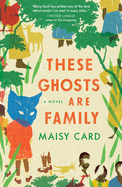
| Publisher: | Simon & Schuster | |
| Genre: | Cultural Heritage, Family Life, General, Literary, Fiction, African American | |
| ISBN: | 9781982117436 | |
| Pub Date: | March 2020 | |
| Price: | $26 |
| Fiction |
by Maisy Card
Maisy Card's compelling debut novel, These Ghosts Are Family, takes place in multiple locations, from 1820s Jamaica to Brooklyn, N.Y., in 2020, and follows an extended Jamaican family who struggle to rise above poverty and racism while dealing with the effects of betrayal.
The novel opens in 2005, introducing Stanford Solomon, an elderly Harlem resident; decades earlier, while working in London, he took his dead co-worker's name, Abel Paisley, to escape his family in Jamaica, effectively "killing" himself. His deception is his secret, and Abel decides, as his health fails, to gather his extended double family in order to tell his story. He is told that "you will finally tell them the truth; you are not who you say you are." The speaker goes on to scold him, calling him the thief of Solomon's death. "Where is his soul now...? Isn't it about time you gave him his due?"
With this as background, episodes and people in Abel's life, both dead and alive, unfold in multiple voices and over vast swaths of time. These episodes are presented asynchronously, actively engaging readers in piecing together the puzzle of a family that doesn't know how or if they all fit together.
Themes of deception and abandonment occur again and again, and Card shows how these acts spread and stain across generations. Born in St. Catherine, Jamaica, and raised in Queens, N.Y., she has spoken of her "big, messy Jamaican family" and that she came to understand how events, even those from generations earlier, could tear a family apart. Card's is a powerful new voice. --Cindy Pauldine, bookseller, the river's end bookstore, Oswego, N.Y.
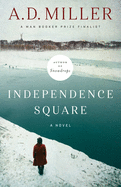
| Publisher: | Pegasus | |
| Genre: | Espionage, General, Literary, Thrillers, Fiction | |
| ISBN: | 9781643133256 | |
| Pub Date: | February 2020 | |
| Price: | $25.95 |
| Fiction |
by A.D. Miller
Independence Square by A.D. Miller (Snowdrops) is a dynamic reimagining of the contested presidential elections that brought Ukraine to the brink of disintegration and civil war. That period, 2004-2005, known as the Orange Revolution, offers Miller an exciting backdrop for his second political drama based in the former Soviet Union.
Set alternately in Kiev and London, Independence Square tracks the fortunes of three pivotal characters whose paths cross one cold night in Kiev's Independence Square in the midst of anti-government protests. Simon Davey is a career British diplomat mediating the conflict between government supporters and the revolutionaries. Olesya Zarchenko is a young activist handpicked by Davey's colleague to be the voice of the Ukrainian people. Misha Kovrin, an unscrupulous Russian oligarch, is the power broker behind the scenes, and Davey must appease him if he hopes to achieve a peaceful resolution to the unrest.
The stakes are high as the diplomatic dance between Davey and Kovrin gets underway. Civil war must be avoided at all costs, even if it means bending some rules and ignoring others. Davey is instrumental in bringing matters to a successful conclusion, but in the process, he becomes embroiled in a devastating scandal that costs him everything: his family, job and reputation. Blaming everyone but himself, he sets out to discover who betrayed him.
Miller helpfully includes an introductory history of Ukrainian politics to set the events of Independence Square in context. With vivid imagery and an impressive cast of actors, it's a contemporary story of how power can corrupt and distort the world's fragile democracies. --Shahina Piyarali, writer and reviewer
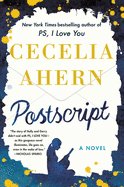
| Publisher: | Grand Central | |
| Genre: | Women, Family Life, General, Romance, Contemporary, Fiction | |
| ISBN: | 9781538746592 | |
| Pub Date: | February 2020 | |
| Price: | $27 |
| Fiction |
by Cecelia Ahern
Cecelia Ahern continues the story she started in her bestselling debut, P.S., I Love You. Holly Kennedy--an Irish 30-year-old--lost her beloved husband and soul mate, Gerry, to a brain tumor; he'd left behind a year's worth of monthly notes, capped with his tender signature of "P.S., I Love You." Each letter offered Holly guidance and wisdom as she struggled to carve out a new life.
In Postscript, it's seven years later, and Holly is romantically involved with Gabriel, a divorcé who co-parents a contentious teenager. Holly is asked to be a guest on a podcast to discuss Gerry's letters, what they meant and how they changed her, but her participation drives a wedge in her relationship with Gabriel. And when a group of terminally ill patients, fans of the "P.S., I Love You" letters, approaches Holly to enlist her help in writing letters of their own, Holly's perspective on life--and love--shifts. Holly assists a 17-year-old, unmarried mother facing cervical cancer to craft a heartfelt message for her newborn; a father with a brain tumor longing to remain part of his family's life; a husband with advanced emphysema and a penchant for writing playful limericks; and a woman battling MS. In offering assistance, Holly examines how time changes those forced to reinvent themselves--both the dying and the living.
Ahern (Flawed) is a passionate, sensitive storyteller. She employs great empathy as she probes dark themes and gives readers the pleasure of another entertaining, enriching story buoyed by hope and positivity. --Kathleen Gerard, blogger at Reading Between the Lines

| Publisher: | Flatiron Books | |
| Genre: | Women, Fiction, Historical, World War II, Jewish | |
| ISBN: | 9781250179760 | |
| Pub Date: | March 2020 | |
| Price: | $25.99 |
| Fiction |
by Jennifer Rosner
The profoundly moving novel The Yellow Bird Sings by Jennifer Rosner offers a beautiful and deeply resonant depiction of the enduring, eternal connection between parent and child. Through unforgettable characters and a gripping, multi-layered plot, Rosner shows how both silence and music can become symbols of hope and survival.
In 1941, Poland is in the throes of war. Róza and Shira live in the small village of Gracja. After Róza's husband, Natan, doesn't return home from work one evening, and her parents are taken by the Germans, mother and daughter flee to a nearby barn owned by Henryk, a frequent customer from the bakery where Róza works. Reluctantly, he and his wife allow the two to remain in the barn loft, hidden from the soldiers carousing nearby. They must stay silent, buried under mounds of hay, with only food scraps for sustenance.
At five years old, Shira--whose name means song--is talented and passionate about music. Before going into hiding, she and her family enjoyed many evenings of dancing, singing and playing the cello and violin. Now silenced by necessity, it is nearly impossible for Shira to remain quiet and still during the days and nights with nothing to do. Róza whispers enchanting, fairytale-like stories to Shira, who imagines a special companion: a yellow bird that sings Shira's original soaring, precocious compositions, the same songs that Shira fights to keep buried deep inside.
"The girl is forbidden from making a sound, so the yellow bird sings. He sings whatever the girl composes in her head: high pitched trills of piccolo; low-throated growls of contrabassoon. The bird chirps all the musical parts save percussion, because the barn rabbits obligingly thump their back feet like bass drums, like snares. The lines for violin and cello are the most elaborately composed. Rich and liquid-smooth, except when fear turns the notes gruff and choppy."
Even if she must endure what once was unthinkable, Róza is determined to protect her daughter. Both know that their safety is dependent on staying silent in more ways than one, especially when Henryk begins visiting the barn nearly every night, raping Róza while a frightened and confused Shira feigns sleep.
Rosner (If a Tree Falls: A Family's Quest to Hear and Be Heard) has a keen ability to elicit heart-wrenching emotion through her simple yet luminescent writing. With vivid, descriptive prose that provides insight into both Shira's and her mother's desperation, the author gives readers a sense of physically being in the barn with the two. Despite the World War II setting, Róza's terror, guilt and shame--palpable on the page--become universally recognizable to anyone who has ever felt responsible for a child.
"Before the worst began happening in Gracja, Róza downplayed the denigrations: the yellow stars, the marks on the doors of Jewish businesses, including her mother and Aunt Syl's bakery. Róza only ever wanted Shira to feel pride in herself. Perhaps this is why she doesn't tell her outright the reason they have to hide, why they are hunted."
When Henryk's barn becomes unsafe and Róza is forced to make a desperate sacrifice, the imaginary bird and its gift of music become a symbol of an everlasting, unbreakable bond between mother and child. "Only in this music, wistful and defiant, can she find something of her own without giving herself away. Find her family, her home. Shuttered windows. Yellow stars. Notes like these to bridge the shared night."
Rosner's use of evocative images and symbolism is perhaps the most integral and powerful part of The Yellow Bird Sings: the thin shafts of sunlight streaming through cracks in the barn's walls contrast with the dark nights and bitterly cold winters; the joy of the music cherished by Róza and Shira counterpoints the terror; the "shared night" stands in for the Jewish collective experience of encountering evil and darkness.
Most striking is her use of the color yellow. It represents, simultaneously, a sign of hatred (the yellow Stars of David that the Nazis required the Jewish people to wear); beauty (the feathers of the imaginary yellow bird that gives comfort while keeping her music, and Shira herself, alive); and the stars that light Róza and Shira's way throughout the longest and darkest of nights.
Stories and music can be powerful forces in people's lives. In The Yellow Bird Sings, Rosner honors that truth through this exquisite tale, one that demonstrates how words and song have a timeless power to keep loved ones connected and their voices alive through generations. --Melissa Firman
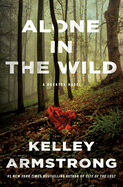
| Publisher: | Minotaur | |
| Genre: | Police Procedural, Mystery & Detective, Fiction, Women Sleuths | |
| ISBN: | 9781250254283 | |
| Pub Date: | February 2020 | |
| Price: | $27.99 |
| Mystery & Thriller |
by Kelley Armstrong
Alone in the Wild is the thrilling fifth installment of Kelley Armstrong's Rockton series (This Fallen Prey). Detective Casey Duncan is enjoying a rare camping vacation with her lover, Sheriff Eric Dalton, when she finds a body in the forest, buried in the snow. Casey uncovers the dead woman and makes an even more startling discovery: a newborn baby is tucked inside the woman's coat--still alive.
Besides finding the woman's killer, Casey and Dalton must track down the baby girl's family in order to return the infant. But what if her relatives wanted her dead? What starts out as a straightforward case turns into a dangerous game in the wilds of the Yukon winter, with Casey and Dalton as both hunters and prey.
Rockton is an off-the-grid town for people, innocent and criminal, who are hiding from the world, and it prohibits children. The baby, temporarily named Abby to honor a former resident, throws a monkey wrench into Rockton's daily routines. The town has no baby supplies, but Armstrong comes up with clever workarounds, and it's amusing to see the cranky, sketchy, murderous characters come together to care for and protect the infant. Abby also brings up feelings Casey and Dalton would rather avoid--Casey can't have children and Dalton had a complicated childhood. Five books in, the two are still an engaging couple, if a bit too conflict-free (they agree on almost everything). And despite the exceptional setting, Armstrong tackles real-world issues, reminding readers that no matter the environment, human nature--including savage, basic instincts--often remains the same. --Elyse Dinh-McCrillis, blogger at Pop Culture Nerd
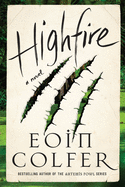
| Publisher: | Harper Perennial | |
| Genre: | Humorous, Fantasy, Contemporary, Fiction, Action & Adventure | |
| ISBN: | 9780062938558 | |
| Pub Date: | January 2020 | |
| Price: | $19.99 |
| Science Fiction & Fantasy |
by Eoin Colfer
A vodka-chugging, suicidal dragon and a delinquent 15-year-old Cajun boy team up against a corrupt cop in this rollicking adventure that features high-stakes battles, daring rescues and hilariously timed pop-culture references.
Vern, the last of the dragons, maintains a low-key life, surfing Netflix in his Louisiana swamp shack. Thinking he owes it to his species to survive, he rarely leaves his La-Z-Boy, crippled by depression. When he smacks a grenade meant for teenager Squib Moreau back at the town's notoriously crooked constable, Regence Hooke, Vern exacerbates a rivalry that might get him extinct.
His existence now known to Squib, Vern blackmails him into work, making Squib deliver essentials like oil to fuel his fire breath, plus Amazon and QVC orders of vegetable spiralizers and charcoal exfoliators. But Squib is happy running errands and crafting Vern's martinis if it means protection from Hooke, whom Squib witnessed killing a drug smuggler. A sociopath who murdered his own father, Hooke wants Squib dead, and protecting the kid gives the dragon what he desperately needs: a reason to live.
Immersing readers in the bayou with its distinctly Southern voice, Highfire by Eoin Colfer (Artemis Fowl; Illegal) delivers an important message about mental illness: that opening the heart to others is a boon to self-worth. Confiding in Squib that he "don't wanna go out" but "don't wanna stay in," Vern is repaid with Squib's healing companionship--and his mutual appreciation of Highlander and Blade Runner. Uproarious hijinks and violent showdowns abound in this outrageously fun fantasy about living life to its fullest. --Samantha Zaboski, freelance editor and reviewer
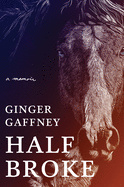
| Publisher: | W.W. Norton | |
| Genre: | Biography & Autobiography, Nature, Women, Self-Help, Animals, Personal Memoirs, Horses, General, Substance Abuse & Addictions | |
| ISBN: | 9781324003076 | |
| Pub Date: | February 2020 | |
| Price: | $25.95 |
| Starred | Biography & Memoir |
by Ginger Gaffney
For those who haven't spent summers cleaning saddles and combing burrs from the manes of horses, it's difficult to comprehend the emotional intelligence of such raw, powerful creatures. But esteemed equine trainer Ginger Gaffney offers a vivid glimpse in her debut memoir, Half Broke, set primarily on an alternative prison ranch in her home state of New Mexico.
At the Delancey Street Foundation's innovative facility, Gaffney faces a situation that threatens both her skills as a riding instructor and her quiet, reclusive nature: the livestock team, made up of convicts recovering from horrifying incidents of abuse and addiction, has lost control of its horses--if that control was ever there to begin with. The animals are as scarred, physically and emotionally, as their caretakers, and Gaffney is quick to make--and understand--the connection.
Slowly, she teaches the ranch residents how the horses read their movements, eager to decipher doubt, anger or repression in their breath and in their gaits. Her instruction offers respite to the convicts and horses alike, and each develops a special relationship with Gaffney that does not always follow a linear redemptive path. There is heartbreak here, but more than anything there is enormous respect. As Gaffney volunteers more and more hours on the ranch, she picks at her own scabs, including her shy childhood, her past destructive relationships and her sexuality. Readers may be left wishing for a deeper portrait of each ranch resident, but Gaffney's story is a rich reckoning in its own right. --Lauren Puckett, freelance writer
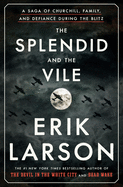
| Publisher: | Crown | |
| Genre: | Biography & Autobiography, Europe, Great Britain - 20th Century, Presidents & Heads of State, History, Military, World War II | |
| ISBN: | 9780385348713 | |
| Pub Date: | February 2020 | |
| Price: | $32 |
| History |
by Erik Larson
The life and times of Winston Churchill may be among the most well-trod ground in historical nonfiction, but perennial bestseller Erik Larson (The Devil in the White City; Dead Wake) makes it feel fresh with new sources, a tight focus and a propulsive storytelling instinct. The Splendid and the Vile follows the first year of Churchill as prime minister, beginning with Hitler's invasion of the Low Countries, through the Battle of Britain and the signing of the Lend-Lease Act. Larson uses letters and diaries, some of which have never been published, to depict the Churchill family and their closest circles in vivid detail.
Hitler, initially reluctant to wage war on Britain, was incensed by Churchill's refusal to negotiate peace. In preparation for an amphibious assault across the English Channel, he ordered the destruction of the Royal Air Force. Bombings in London and Berlin soon escalated into massive attacks against British civilians, known as the Blitz. Larson depicts Churchill as an indomitable leader, inspiring a fighting spirit in his cabinet and the public. Yet Churchill's family, staff and colleagues sometimes suffered under his constant demands or were plagued by personal problems of their own. His son Randolph incurred enormous gambling debts. Daughter Mary resisted her parents' protectiveness by joining the Women's Voluntary Services and eventually leading an anti-aircraft battery. Wife Clementine fretted over her children's personal lives while entertaining ministers and foreign dignitaries at the P.M.'s country escape, Chequers. The Splendid and the Vile is a fascinating mix of the largest and smallest scales in human affairs. Larson blends domestic drama with the destruction of cities to riveting effect. --Tobias Mutter, freelance reviewer

| Publisher: | Simon & Schuster | |
| Genre: | Nuclear Warfare, Public Policy, United States, 21st Century, 20th Century, History, Political Science, International Relations, American Government, Military Policy, Executive Branch, Military, Arms Control | |
| ISBN: | 9781982107291 | |
| Pub Date: | January 2020 | |
| Price: | $30 |
| History |
by Fred Kaplan
Presidents from Harry Truman to Donald Trump have dealt with the threat of nuclear war in vastly different ways. In The Bomb, Pulitzer Prize finalist Fred Kaplan (The Wizards of Armageddon; The Insurgents) uses recently declassified documents to show what these men privately thought of nuclear weapons versus their public saber-rattling, how the military actually planned to enact Armageddon, and how close the world came to ending on multiple occasions.
At the beginning of the Cold War, nuclear weapons were confined to bombers under Strategic Air Command (SAC), led by Curtis "Bombs Away" LeMay. His solution to several crises, thankfully ignored, was to obliterate China and the Soviet Union. Though nukes were soon fitted on intercontinental and submarine-fired missiles, SAC controlled the actual bombing targets that would be presented to the president during a crisis. This Single Integrated Operational Plan (SIOP) turned out to be extreme overkill, with even the most restrained options leading to tens of millions of civilian deaths. As Secretary of Defense, Robert McNamara discovered that SAC's targets overlapped significantly and were regularly expanded to justify the purchase of more nuclear weapons rather than reflecting new strategic concerns.
According to Kaplan's behind-the-scenes information, nearly every president, even Ronald Reagan, has privately abhorred nukes despite their most bellicose public posturing. Donald Trump is an exception, having threatened nuclear war via Twitter and demanded an arsenal matching the height of the Cold War. The Bomb is a fascinating and sometimes harrowing look at how political and military leaders have grappled with Earth's most destructive force. --Tobias Mutter, freelance reviewer
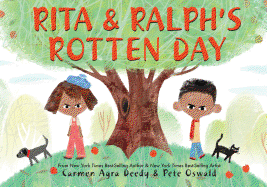
| Publisher: | Scholastic Press | |
| Genre: | Friendship, Emotions & Feelings, Humorous Stories, Social Themes, Juvenile Fiction | |
| ISBN: | 9781338216387 | |
| Pub Date: | March 2020 | |
| Price: | $17.99 |
| Starred | Children's & Young Adult |
by Carmen Agra Deedy, illust. by Pete Oswald
Saying sorry can be difficult, but it's worth every awkward, teeth-gritting effort, as two friends discover in Carmen Agra Deedy and Pete Oswald's gratifying, on-point picture book, Rita and Ralph's Rotten Day.
Every day, best friends Rita and Ralph travel "down the hill, and up the hill, and down the hill, and up the hill" to meet under the apple tree between their houses. Then, one fateful day, an ill-conceived game of Sticks and Stones results in a head bump. "This was bad. Really bad. So they ran away." Rita is mad. Ralph is sorry he hurt Rita. He wants to apologize. But by the time he makes the long, tiring walk to Rita's house, he's a "smidge grumpy" and his apology doesn't quite come across as genuine. And when Rita walks to Ralph's house, feeling sorry about her response, she can't manage an apology either. It's not until the rotten day ends and a new day dawns that the friends figure out how to "meet in the middle."
Rita and Ralph's tiff, told with a sweet freshness, is a timeless, engaging tale with which any young reader is likely to identify. Their friendship is the real thing, evidenced by their joy in meeting each day. Oswald's gouache and digital rendering of the pals depicts them joyously airborne as they high-five, and the landscape format of the book shows the distances to which they'll go to spend time together. Cuban-born Deedy is the author of 14 Cows for America and the Pura Belpré-honored Martina the Beautiful Cockroach, among many other much-loved books. Fine-arts painter, animator, author and illustrator Oswald's previous works include The Bad Seed (by Jory John). Rita and Ralph's Rotten Day is their first team effort. We hope it's not their last. --Emilie Coulter, freelance writer and editor

| Publisher: | Inkyard Press | |
| Genre: | Friendship, Fantasy, Contemporary, Apocalyptic & Post-Apocalyptic, Social Themes, Young Adult Fiction, Science Fiction, Diversity & Multicultural | |
| ISBN: | 9781335911551 | |
| Pub Date: | February 2020 | |
| Price: | $18.99 |
| Children's & Young Adult |
by Alechia Dow
In her debut, Alechia Dow uses sci-fi and romance to tell an important story about resistance, hope and the arts.
Two years ago, humans were defeated by the electric-powered alien species the Ilori. All human art was banned, but 17-year-old Ellie maintains a contraband library in her apartment building. M0Rr1S (Morris) is a "labmade," humanlike Ilori. His kind "are not supposed to form connections or feel," yet Morris feels deeply, particularly about music. When searching for music to add to his collection, Morris discovers Ellie's library. Instead of turning her in, he enlists her to gather music for him--someone who has amassed this stock is surely capable of going unnoticed. To his dismay, she is caught and the two are forced to embark on a dangerous cross-country trip, during which an unlikely romance blossoms.
Alechia Dow's The Sound of Stars is an homage to art's power to create "love during conflict" and build "bridges during division." Dow takes this homage a step further by including articles about and lyrics from an imagined band called The Starry Eyed, whose songs might inspire listeners to save the world. Ellie is a black-presenting "mixed" teen who has been exposed to her fair share of "dead black children shot in the streets, immigrant children locked in cages, murders, politics, white supremacy." All of which make her question whether humanity is even worth saving. But Morris, who has been told all his life that there is "something defective" about him, believes that they can "make this world, any world, what [they] want it to be." This debut is a hopeful testament to resistance that weaves in commentary about climate change, racism and politics, and includes LGBTQIA and mental and physical health representation. --Lana Barnes, freelance reviewer and proofreader

| Publisher: | Norton Young Readers | |
| Genre: | Emotions & Feelings, Social Themes, Books & Libraries, Imagination & Play, Self-Esteem & Self-Reliance, Juvenile Fiction | |
| ISBN: | 9781324004431 | |
| Pub Date: | March 2020 | |
| Price: | $18.95 |
| Children's & Young Adult |
by David Ouimet
"Sometimes, I go quiet." A girl--hood up, slumping forward in resignation--walks to school, where "I don't know how I am supposed to be./ I am timid. I am small." One can hardly blame her. The paintings in I Go Quiet, by musician and debut author-illustrator David Ouimet, depict a gloomy, factory-evoking school where from the front of every child's desk hangs a dehumanizing white mask that the kids wear to some sort of assembly. Think Hogwarts by way of George Orwell. The girl feels set apart from everyone else: "I am different./ I am the note/ that's not in tune./ I go mousy. I go gray." Sure enough, while the girl's mask has pointy ears like the other kids', hers also has whiskers and a mouselike snout.
Why does I Go Quiet deserve to be on top of a stack of picture books about how reading is power and imagination is liberating? Consider, for example, a double-page spread showing the masked kids marching up and down the school's stairwells. The image resembles a cross section of a machine, each child a dead-eyed cog. Ouimet seems to be speaking (and painting) not about one person's anxiety but about a larger concern: the seductiveness of conformity, the threat of human obsolescence through automation. From the moment the girl arrives at school until she heads home that night, Ouimet's illustrations are dichromatic. But on her walk home ("When I am heard/ I will build cities/ with my words"), she sees a moonlit city in color. Later, from her bed, she looks out her window. Outside is a pair of white birds--a change from all the black ones that haunt prior pages, and perhaps a sign of hope. --Nell Beram, freelance writer and YA author